Transitioning to a zero-waste lifestyle is a crucial step towards creating a sustainable future. People must assess and understand their waste habits, identify areas with the highest waste generation, and evaluate their use of disposable products.
By analyzing food waste and recyclable materials disposal, individuals can gain insight into current waste patterns and make necessary changes. Commitment and dedication are required to achieve zero waste, starting with small, attainable goals like reducing plastic waste.
Embracing the 5 Rs of zero waste – refuse, reduce, reuse, recycle, and compost – is essential to minimize waste generation. Adopting sustainable shopping habits, such as buying in bulk with reusable containers and choosing products with minimal packaging, is another key aspect of transitioning to a zero-waste lifestyle.
By taking action and making small changes, individuals can contribute to a cleaner, greener, and more sustainable world for future generations. Education, support for sustainable businesses, and advocacy for environmental conservation policies are also important in achieving a zero-waste lifestyle.
Key Takeaways
- Identifying areas where waste is generated the most and evaluating the use of disposable products are crucial steps in transitioning to a zero-waste lifestyle.
- Embracing the 5 Rs of zero waste (Refuse, Reduce, Reuse, Recycle, Compost) can guide individuals in making sustainable choices and minimizing waste.
- Adopting sustainable shopping habits such as buying in bulk with reusable containers and supporting local and sustainable brands can contribute to a more sustainable future.
- Taking small steps, setting achievable goals, and inspiring others to join the zero-waste movement are important actions in creating a cleaner, greener, and more sustainable world for future generations.
Assessing and Understanding Waste Habits
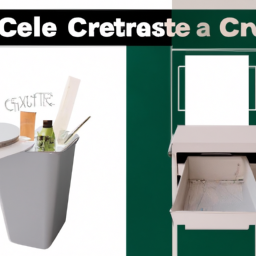
They evaluate the use of disposable products and analyze the disposal of food waste and recyclable materials to understand current waste patterns.
Analyzing waste generation is a crucial step in transitioning to a zero-waste lifestyle. By evaluating disposable products, such as single-use plastics and packaging, individuals can identify areas where waste is generated the most. This helps in pinpointing specific actions that can be taken to reduce waste.
Additionally, analyzing the disposal of food waste and recyclable materials provides insights into how these items are being managed. It allows for the identification of opportunities to improve recycling efforts and minimize food waste.
Setting and Achieving Zero-Waste Goals
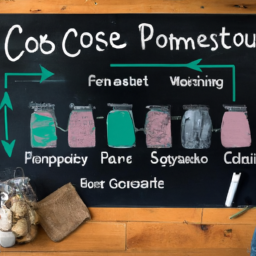
To achieve zero-waste goals, individuals can start by focusing on one aspect, such as reducing plastic waste. Plastic waste is a significant contributor to environmental pollution and poses a threat to marine life and ecosystems.
By implementing simple changes like using reusable shopping bags, water bottles, and food containers, individuals can significantly reduce their plastic consumption. Tracking progress is essential to stay motivated and measure the impact of these changes.
Embracing the 5 Rs of Zero Waste
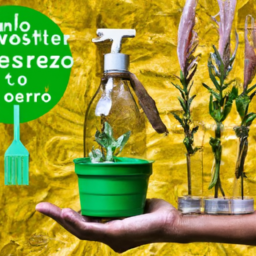
Embracing the 5 Rs of Zero Waste, individuals can refuse items that contribute to waste and are not essential, reducing their consumption and environmental impact. By refusing single-use items, such as plastic bags, straws, and disposable water bottles, individuals can make a significant difference in reducing waste.
Additionally, composting organic waste, such as food scraps and yard trimmings, can divert a large portion of waste from landfills and create nutrient-rich soil for gardening and farming. Composting not only reduces greenhouse gas emissions but also helps conserve water and energy.
Adopting Sustainable Shopping Habits
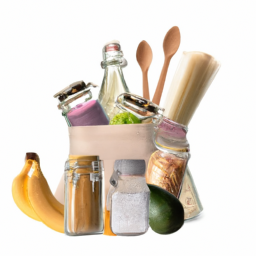
By adopting sustainable shopping habits, individuals can make a positive impact on the environment and reduce their ecological footprint. One key aspect of sustainable shopping is choosing products with minimal or eco-friendly packaging. Sustainable packaging options, such as biodegradable materials or packaging made from recycled materials, can help minimize waste and reduce the consumption of resources.
Additionally, shopping locally offers numerous benefits. It supports local businesses and reduces the carbon footprint associated with transportation. Local produce and goods are often fresher, as they don’t require long-distance shipping. By supporting local farmers and artisans, individuals can contribute to the local economy and foster a sense of community.
Ultimately, adopting sustainable shopping habits and choosing sustainable packaging options can help create a more sustainable future for both the environment and local communities.
Creating a Sustainable Future and Taking Action
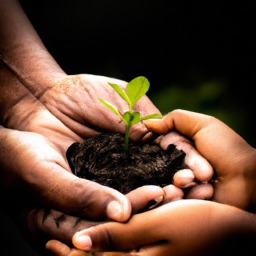
Individuals can contribute to a cleaner, greener, and more sustainable world for future generations by advocating for policies and initiatives that prioritize environmental conservation. Taking action for a sustainable future and advocating for environmental conservation is crucial in creating a positive impact on the planet. Here are four ways individuals can actively participate in creating a sustainable future:
Support businesses and organizations that promote sustainability: By choosing to purchase from eco-conscious companies and supporting organizations that prioritize environmental conservation, individuals can help drive change and encourage more sustainable practices.
Educate oneself about sustainable living practices: By staying informed about the latest advancements in sustainability and understanding how our actions impact the environment, individuals can make informed choices and adopt more sustainable habits in their daily lives.
Reduce, reuse, and recycle to minimize waste: By actively practicing the 3 R’s – reducing consumption, reusing items whenever possible, and recycling as a last resort – individuals can significantly reduce their environmental footprint and contribute to waste reduction efforts.
Advocate for policies and initiatives that prioritize environmental conservation: Individuals can make a difference by using their voice to speak up for environmental causes and supporting policies that prioritize sustainability. By advocating for change at a local, national, and global level, individuals can help shape a more sustainable future for all.
Small Changes in Shopping Habits Contribute to a More Sustainable Future
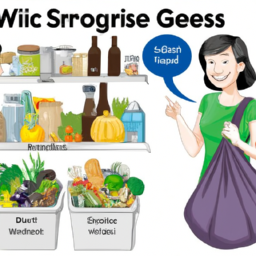
In order to create a sustainable future, small changes in shopping habits can have a significant impact on reducing waste at home. By adopting sustainable shopping practices, individuals can contribute to a more eco-friendly lifestyle.
One effective strategy is to buy in bulk using reusable containers, as this reduces the need for single-use packaging. Additionally, choosing products with minimal or eco-friendly packaging can greatly reduce waste.
Shopping second-hand is another great way to reduce waste, as it decreases the demand for new products. Supporting local and sustainable brands also helps promote a more sustainable economy.
Lastly, practicing mindful consumption by planning meals and repairing items can prevent unnecessary waste. By implementing these small changes in shopping habits, individuals can play a vital role in creating a more sustainable future.
Every Step Towards a Zero-Waste Lifestyle Counts
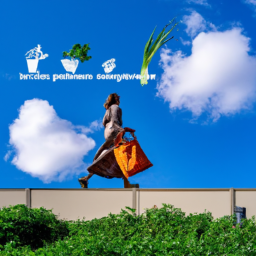
Every effort made towards reducing waste contributes to the progress of adopting a zero-waste mindset. Tracking progress and identifying waste hotspots are essential steps in this journey. Here are four key ways to achieve this:
Conduct waste audits: Regularly assess and measure the amount of waste generated in different areas of your life, such as your home, workplace, or community. This will help identify the specific areas where waste is being produced the most.
Analyze consumption patterns: By evaluating your use of disposable products, you can identify opportunities to reduce waste. Look for alternatives to single-use items and opt for reusable or sustainable options whenever possible.
Monitor recycling and food waste disposal: Keep track of how well you are recycling and properly disposing of food waste. This will help you identify any areas where improvements can be made and ensure that recyclable materials are being diverted from landfill.
Implement waste reduction strategies: Once waste hotspots have been identified, take action by implementing strategies to reduce waste in those areas. This could involve implementing composting systems, promoting recycling initiatives, or finding ways to reduce packaging waste.
Setting Achievable Goals for Waste Reduction
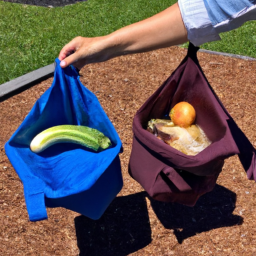
Tracking progress and setting specific, measurable goals is essential for effectively reducing waste and working towards a more sustainable future.
Implementing behavior changes is a key aspect of waste reduction, and setting achievable goals can help individuals and communities make meaningful progress.
By tracking progress, individuals can see the impact of their actions and make adjustments as necessary. This can involve monitoring waste generation, evaluating the use of disposable products, and analyzing recycling and composting habits.
By setting specific goals, such as reducing plastic waste or practicing mindful consumption, individuals can focus their efforts and measure their success.
Implementing behavior changes, such as refusing unnecessary items and shopping sustainably, can lead to long-term waste reduction and contribute to a more sustainable future.
Inspiring Others to Join the Zero-Waste Movement
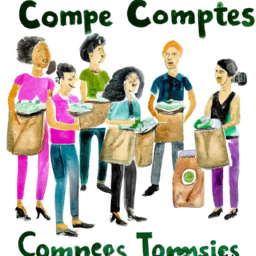
Encouraging and sharing practical tips about waste reduction can inspire others to actively participate in the zero-waste movement. By inspiring communities and fostering environmental consciousness, individuals can make a significant impact on reducing waste and creating a more sustainable future.
Here are four ways to inspire others to join the zero-waste movement:
Lead by example: Demonstrating your commitment to a zero-waste lifestyle can inspire others to follow suit. Showcasing your own waste reduction efforts and sharing your experiences can motivate others to take action.
Educate and raise awareness: Providing information about the environmental impact of waste and the benefits of a zero-waste lifestyle can help people understand the importance of reducing waste. By sharing facts and statistics, you can inspire others to make conscious choices.
Create a sense of community: Building a supportive network of like-minded individuals can encourage others to join the zero-waste movement. Organize events, workshops, or online forums where people can exchange ideas, share tips, and support each other’s journey towards waste reduction.
Share success stories: Highlighting success stories of individuals or communities who have successfully transitioned to a zero-waste lifestyle can inspire others to do the same. By showcasing the positive impact of waste reduction, you can motivate others to take part in creating a cleaner and greener world.
Supporting Businesses and Organizations That Promote Sustainability
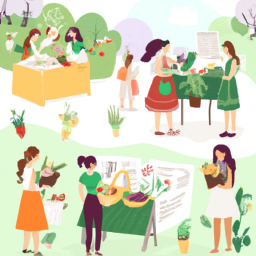
Supporting businesses and organizations that prioritize environmental conservation and promote sustainable practices is crucial for creating a greener and more eco-friendly world. By promoting sustainable businesses and supporting eco-friendly organizations, individuals can play an active role in mitigating the negative impact of human activities on the environment.
Promoting sustainable businesses involves encouraging the adoption of eco-friendly practices, such as reducing waste, conserving energy, and using renewable resources. Supporting eco-friendly organizations can be done through volunteering, donations, or purchasing products and services from them.
Frequently Asked Questions
How Can I Encourage My Family to Adopt a Zero-Waste Lifestyle?
Creating a sustainable home environment and inspiring friends and neighbors to go zero waste can be achieved by leading by example and providing education.
Show your family the benefits of a zero-waste lifestyle through your own actions and choices. Engage in open discussions about the environmental impact of waste and the importance of reducing it.
Share practical tips and resources to help them make small changes. Encourage them to join you in taking steps towards a more sustainable future.
What Are Some Creative Ways to Repurpose Items Instead of Throwing Them Away?
Upcycling ideas and DIY projects provide creative ways to repurpose items instead of throwing them away. By transforming old materials into new and useful products, individuals can reduce waste and contribute to a more sustainable future.
From turning glass jars into storage containers to repurposing old clothing into home decor, the possibilities for upcycling are endless. These projects not only reduce waste but also encourage creativity and resourcefulness, making a positive impact on both the environment and personal well-being.
How Can I Reduce Food Waste in My Daily Life?
Reducing food waste in daily life can be achieved through meal planning and composting leftovers. By carefully planning meals and only purchasing what’s needed, individuals can minimize food waste.
Leftover food can be composted to create nutrient-rich soil for gardening. Composting not only reduces waste but also contributes to a sustainable future.
These practices not only save money but also make a significant impact on reducing food waste. Incorporating meal planning and composting into daily routines can have a positive effect on reducing food waste.
Are There Any Tips for Reducing Waste While Traveling or Eating Out?
Reducing waste while traveling or eating out can be achieved by adopting a few simple practices.
First, carry a reusable water bottle and utensils to avoid single-use plastic items.
Opt for restaurants that prioritize sustainable practices and use eco-friendly packaging.
Minimize food waste by ordering only what can be consumed and taking leftovers home.
When traveling, choose accommodations that prioritize waste reduction and participate in recycling programs.
What Are Some Affordable Alternatives to Single-Use Plastic Products?
Affordable alternatives to single-use plastic products include eco-friendly options such as reusable water bottles, cloth grocery bags, and stainless steel straws.
These alternatives not only reduce waste but also save money in the long run.
By choosing to invest in these sustainable alternatives, individuals can make a significant impact on reducing plastic pollution and promoting a more environmentally friendly lifestyle.
Making small changes in daily habits can lead to a more sustainable future for all.
Conclusion
In conclusion, transitioning to a zero-waste lifestyle is a crucial step towards creating a sustainable future. By assessing waste habits, setting achievable goals, and embracing the 5 Rs of zero waste, individuals can make a significant impact on waste reduction.
Adopting sustainable shopping habits and taking action are also essential in achieving a cleaner and greener world. Every small change counts, and by inspiring others to join the zero-waste movement and supporting businesses that promote sustainability, we can work together towards a more sustainable future.
Let us all commit to making a difference and creating a better world for future generations.